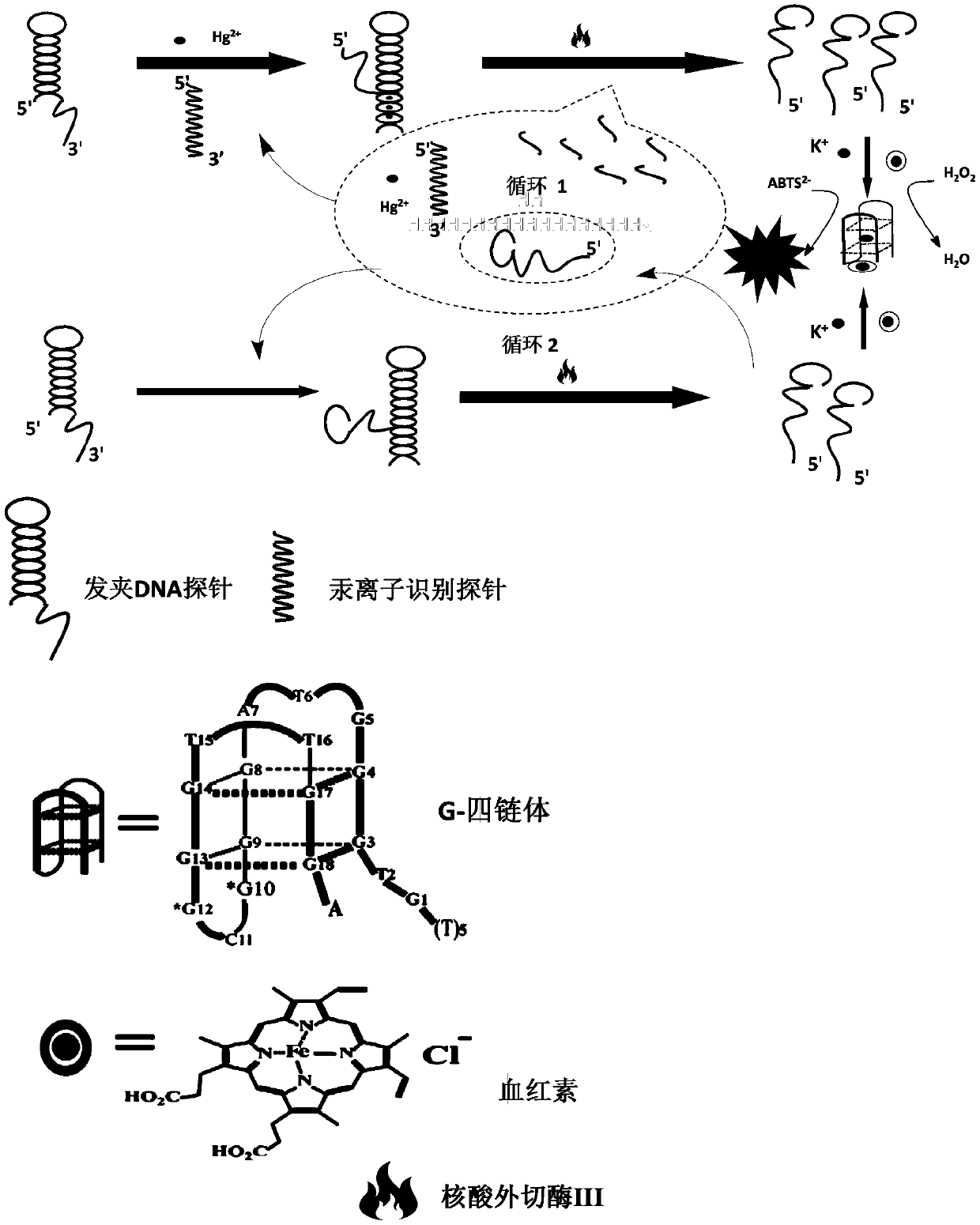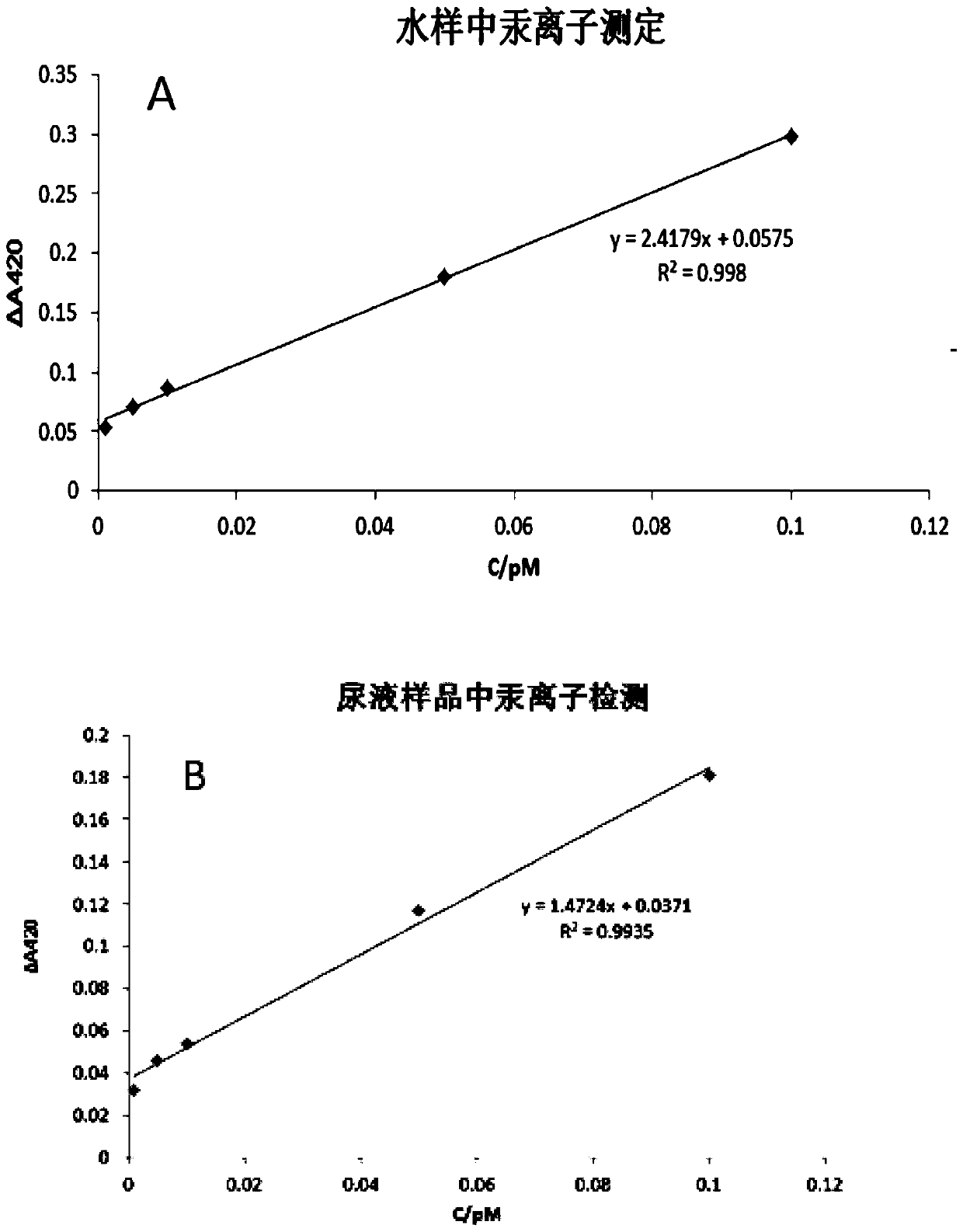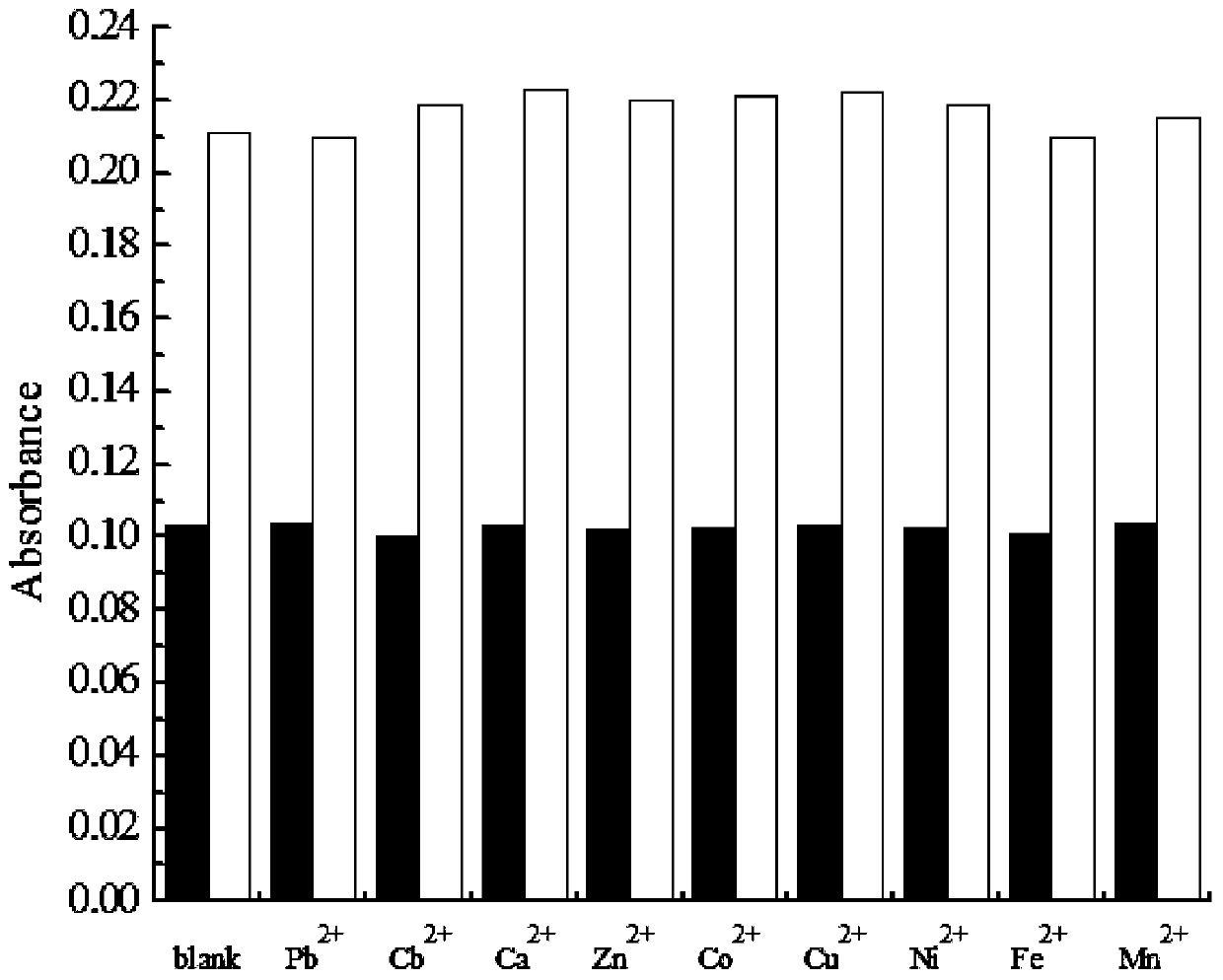A mercury ion detection probe group, kit and mercury ion detection method based on exonuclease III
A technology of exonuclease and detection method, which is applied in the field of mercury ion detection and mercury ion detection probe group based on exonuclease III, which can solve the problems of low sensitivity, inability to apply complex samples, and expensive equipment and instruments
- Summary
- Abstract
- Description
- Claims
- Application Information
AI Technical Summary
Problems solved by technology
Method used
Image
Examples
preparation example Construction
[0028] The preparation method of the probe is not particularly limited in the present invention, and it is enough to entrust a biological company well-known to those skilled in the art to carry out the synthesis.
[0029] The present invention also provides a mercury ion detection kit based on the probe set described in the above technical solution, and the kit includes the probe set described in the above technical solution and exonuclease III. In the present invention, the kit preferably also includes a Tris-HCl buffer, which is used as a reaction solvent; the kit preferably also includes heme, ABTS and H 2 o 2 , the heme, ABTS and H 2 o 2 The G-quadruplex formation sequence dissociated due to the presence of mercury ions in the detection process can be realized, thereby realizing the detection of mercury ions.
[0030] The present invention also provides a mercury ion detection method based on the probe set described in the above technical solution or the kit described i...
Embodiment 1
[0046] Design of Hairpin DNA Probe and Mercury Ion Recognition Probe
[0047] The sequence structure of the hairpin DNA probe is as follows (5'-3'):
[0048] 5'-CGAAAAGTGT GGGTAGGGCGGGTTGGG ACCCTACCCACACTTTTCGACTTTTCG-3'
[0049] Among them, the bold underlined partial sequence (GGGTAGGGCGGGTTGGG) is the G-quadruplex forming sequence, the 5' end partial sequence of the G-quadruplex forming sequence and its 5' upstream sequence (CGAAAAGTGTGGGTAGGG) and the G-quadruplex forming sequence The downstream sequence at the 3' end (CCCTACCCACACTTTTCG) is a complementary sequence, forming a stem-like region. The 3' end of the hairpin DNA probe contains two sets of repeating sequences (ACTTTTCG), one group is in a single-stranded free state, and the other group is in the stem-like region. The state of hybridization is associated with the signal amplification cycle 1 and cycle 2 processes, respectively.
[0050] The mercury ion recognition probe sequence structure is as follows (5'-3'...
Embodiment 2
[0054] Detection of different concentrations of mercury ions in water samples
[0055] Take a sterilized 0.5mL centrifuge tube, respectively take 25 μL of the hairpin DNA probe (0.5 μM) in Example 1, and 25 μL of the mercury ion recognition probe (0.2 μM) in Example 1 in 20 mM Tris-HCl buffer Solution (pH=7.4, 70mMNaCl, 10mMMgCl 2 , 20mM KCl) to 90°C for 10-20min, then gradually cooled to room temperature (temperature setting: 70°C for 10-15min, 50°C for 25-30min, 30°C for 10-15min, take it out at 20-25°C Leave it for 20-30 minutes). Add 25 μL of detection sample (mercury ion concentration between 0.001pmol / L to 1pmol / L) and 10U Exo III to the above solution, stir evenly, and then react at 25°C for 60min to make it enter a spontaneous circulation process and generate a large amount of G - a quadruplex forming sequence. Treat at 80°C for 10 minutes to inactivate the Exo III enzyme. After the reaction was completed, 0.5 μL of 0.4 μmol / L hemin was added and reacted in the dar...
PUM
 Login to View More
Login to View More Abstract
Description
Claims
Application Information
 Login to View More
Login to View More - R&D
- Intellectual Property
- Life Sciences
- Materials
- Tech Scout
- Unparalleled Data Quality
- Higher Quality Content
- 60% Fewer Hallucinations
Browse by: Latest US Patents, China's latest patents, Technical Efficacy Thesaurus, Application Domain, Technology Topic, Popular Technical Reports.
© 2025 PatSnap. All rights reserved.Legal|Privacy policy|Modern Slavery Act Transparency Statement|Sitemap|About US| Contact US: help@patsnap.com



